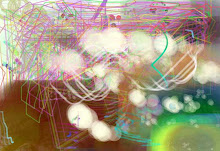Stuart Davis-
Stuart Davis is an American painter, who was born in 1894. He had many influences while he was growing up, since his father was an art director for a Philadelphia newspaper. Davis later worked with Robert Henri from the years 1910 to 1913, and he created covers for a realist periodical called The Masses. After visiting Paris in 1928 to 1929, he learned the idea of cubism, where he used natural forms to express the characteristic of an American life. I like his work called Report from Rockport from 1940, because it really represents the way of life of a typical American. I’m assuming that it’s a street where people interact with their neighbors. You can also see the natural side of this drawing, where the clouds are represented with different colors. You can also see the landscape of mountains in the back. And People going on about their lives.

Robert Indiana-
Robert Indiana is an American painter who was born in 1928. He studied Munson-Williams-Proctor Institute in Utica, New York, which led him to study in School of the Art Institute of Chicago. From the Institute of Chicago, he won a traveling fellowship to Europe, and ended up studying in Edinburgh University and Edinburgh College of Art in Scotland. He got his ideas from Longfellow, Whitman, and Melville, who are known famous for their anti-transcendentalistic and transendentalistic ideas in writing. Indiana is very famous for his pop art designs for the words Eat, Love, and Die. And he is most famous for his pop art work for the word Love used on postage stamps in 1973. I like his work called The American Love from 1975. It represents his style of designing, which reflected upon the American pride. It is shown in the red, blue and white colors with the word Love formed into different forms. It also shows the ‘transcendental’ ideas from Whitman, which can be found from his poem I Hear America Singing.


No comments:
Post a Comment